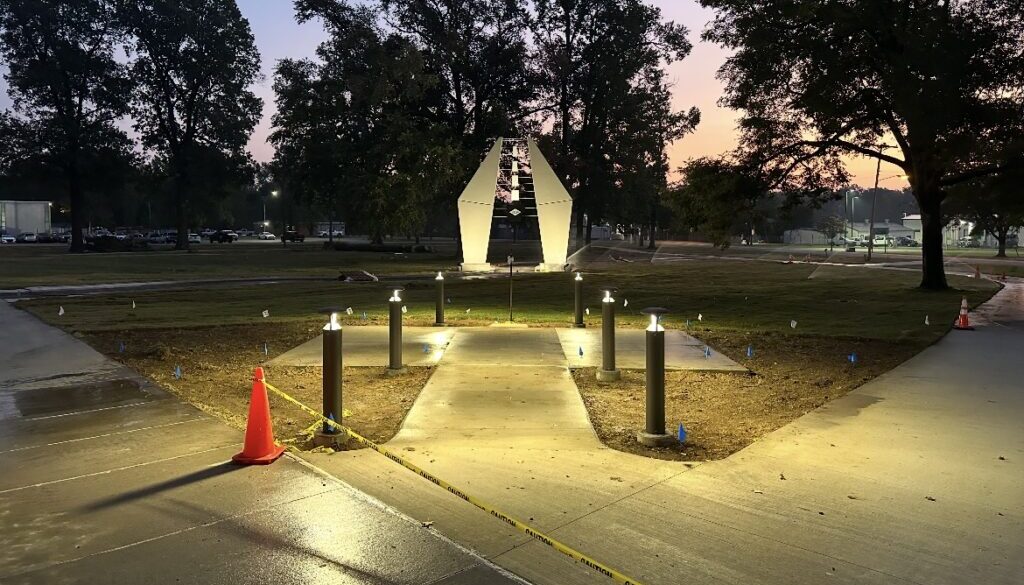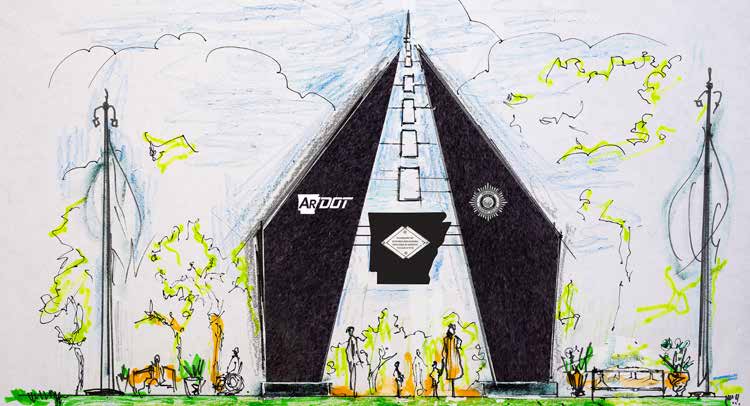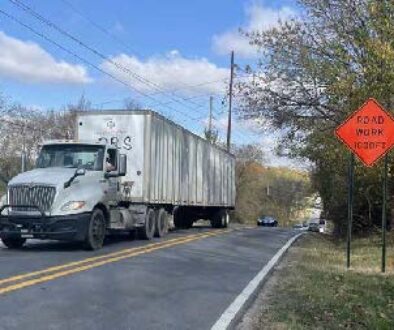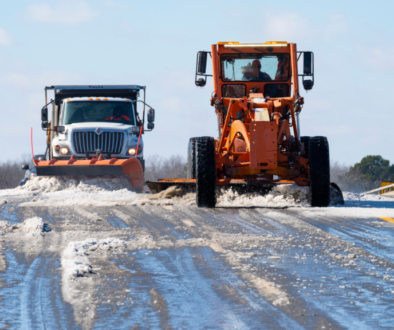With Lives on the Line, ARDOT Puts Safety First

by Deborah Horn
Close your eyes and imagine sitting at your desk. Imagine you’re a skilled welder working in the factory, masked and gloved, or a warehouse forklift driver, fetching a pallet of steel tubing from the top shelf for a last-minute order. It’s noisy and hot, but with minimal distractions, except for occasional equipment malfunctions or questions from the boss.
Now, imagine it’s late Friday afternoon and you’re trying to do your job in the middle of Interstate 40 near the 30 Exit. It’s Mojave Desert hot, you’re sweating, and it’s so loud, it’s impossible to hear your boss. Hundreds of hurried, angry, inexperienced, or distracted drivers and 18-wheelers roar by at 75 mph, mere feet away and separated by a few strategically placed orange plastic cones. So close, you can feel the draft coming off the vehicles.
Over the last four years, five Arkansas Department of Transportation (ARDOT) employees have died on the job. In 2021, Kurt “Jonathan” Cottier died from injuries sustained in a work zone crash on Interstate 40, and Winfred Petty died from injuries suffered in a hit-and-run while placing road signs at a work zone on Interstate 30 the following year.
In 2023, Timothy Harris, 25, was killed while attempting to pick up a shovel that had fallen from a vehicle onto the road, and in 2024, Brandon Lee Jones, 29, died while picking up cones at a Highway 32 jobsite. He slipped from the back of the truck and fell, and the car hit him. In early 2025, Charles “Tony” Glover, 39, a member of the Lonoke County maintenance crew, was patching potholes when he was struck by a vehicle.
ARDOT plans to unveil its Fallen Worker Memorial this fall. They hope it will raise awareness of the dangers of highway construction, but that alone isn’t enough.
“It’s unacceptable, even one death is too many,” ARDOT’s upper management decided. The two 2022 deaths prompted a unified effort between ARDOT and the Arkansas Highway Commission to address work zone crashes and injuries. Still, the discussion didn’t end there and continues to this day, said Steve Frisbee, P.E., Maintenance Assistant Chief Engineer, during a recent conversation with Arkansas Good Roads magazine.

Working from the Top Down
Jared Wiley, ARDOT Director, said, “ARDOT is serious about improving roadway safety. The primary theme for us during the recent (2025) Arkansas Legislative Session was improved safety for roadway workers and the traveling public. We were successful in that regard with several key pieces of legislation.”
This year, ARDOT worked with State Legislators to enact three laws that they believe will create a safer work environment for all those involved in highway and interstate construction. These include Arkansas Act 327 of 2025, which defines “mobile work zones” and allows law enforcement officers to double ticket fines for moving traffic violations within the designated area. This legislation aims to enhance safety for both road workers and drivers by emphasizing the importance of slowing down, remaining alert, and obeying traffic laws in work zones. The act clarifies the definition of mobile work zones, the signage used, and what constitutes a mobile work zone.
“It addresses the dangers of work zones,” Frisbee said.
ARDOT is serious about improving roadway safety. The primary theme for us during the recent (2025) Arkansas Legislative Session was improved safety for roadway workers and the traveling public. We were successful in that regard with several key pieces of legislation.
— Jared Wiley, ARDOT Director
Going Green
Arkansas Act 209 of 2025 authorizes the use of green lights on roadway construction and maintenance vehicles. More specifically, it allows for the use of amber, white, green, or combinations of these colors in oscillating, flashing, or rotating emergency or warning lights on vehicles owned by a state, county, or municipal agency, or operating under contract with such an agency, that are used for hazardous service on a roadway.
Utilizing green lights aims to enhance the visibility and safety of road workers and their vehicles, while also encouraging the public to exercise caution when encountering them. Frisbee said, “Green stands out. It enhances visibility.”
Education is Key
 Arkansas Act 117 of 2025 requires that Arkansas driver’s instruction manuals and its driver’s license examination include information about safe operation in highway work zones. This means the manual provides detailed information on the topic, such as information about penalties for violations in work zones, statistical data on worker injuries, guidance on awareness and speed reduction, and new drivers are now tested on their knowledge of work zone safety. Wiley said, “The goal is to educate the next generation about work zone safety before they get behind the wheel.”
Arkansas Act 117 of 2025 requires that Arkansas driver’s instruction manuals and its driver’s license examination include information about safe operation in highway work zones. This means the manual provides detailed information on the topic, such as information about penalties for violations in work zones, statistical data on worker injuries, guidance on awareness and speed reduction, and new drivers are now tested on their knowledge of work zone safety. Wiley said, “The goal is to educate the next generation about work zone safety before they get behind the wheel.”
So, with that in mind, Wiley said ARDOT is also “collaborating with the Arkansas Department of Education (ADE) to develop a curriculum for K-12 students better to inform them on the importance of roadway safety. The curriculum will cover a range of topics, including safely crossing the street and the dangers of distracted driving. We know that Street Smart will improve safety for our young people and look forward to its launch.”


